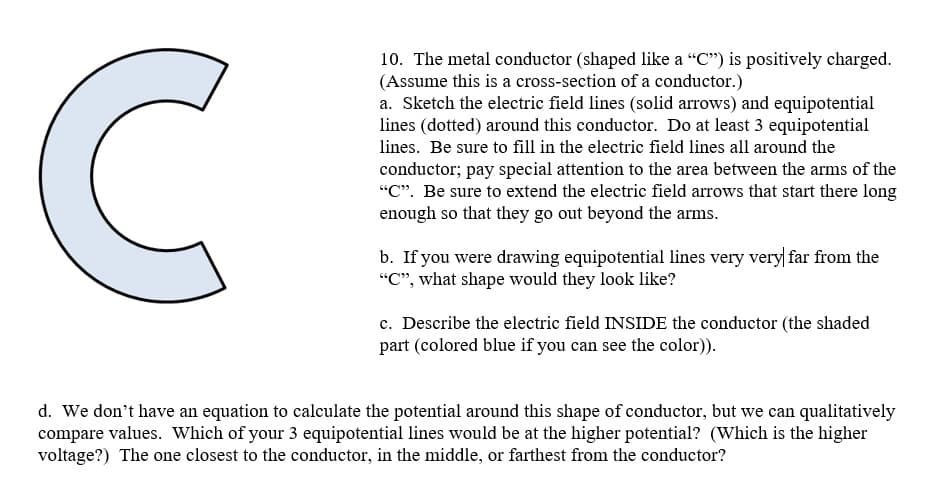10. The metal conductor (shaped like a “C") is positively charged. (Assume this is a cross-section of a conductor.) a. Sketch the electric field lines (solid arrows) and equipotential lines (dotted) around this conductor. Do at least 3 equipotential lines. Be sure to fill in the electric field lines all around the conductor; pay special attention to the area between the arms of the "C". Be sure to extend the electric field arrows that start there long enough so that they go out beyond the arms. b. If you were drawing equipotential lines very very| far from the "C", what shape would they look like? c. Describe the electric field INSIDE the conductor (the shaded part (colored blue if you can see the color)). d. We don't have an equation to calculate the potential around this shape of conductor, but we can qualitatively compare values. Which of your 3 equipotential lines would be at the higher potential? (Which is the higher voltage?) The one closest to the conductor, in the middle, or farthest from the conductor?
The metal conductor (shaped like a “C”) is positively charged. (Assume this is a cross-section of a conductor.)
a) Sketch the electric field lines (solid arrows) and equipotential lines (dotted) around this conductor. Do at least 3 equipotential lines. Be sure to fill in the electric field lines all around the conductor; pay special attention to the area between the arms of the “C”. Be sure to extend the electric field arrows that start there long enough so that they go out beyond the arms.
b) If you were drawing equipotential lines very very far from the “C”, what shape would they look like?
c) Describe the electric field INSIDE the conductor (the shaded part (colored blue if you can see the color)).
d) We don’t have an equation to calculate the potential around this shape of conductor, but we can qualitatively compare values. Which of your 3 equipotential lines would be at the higher potential? (Which is the higher voltage?) The one closest to the conductor, in the middle, or farthest from the conductor?

Trending now
This is a popular solution!
Step by step
Solved in 5 steps with 1 images
